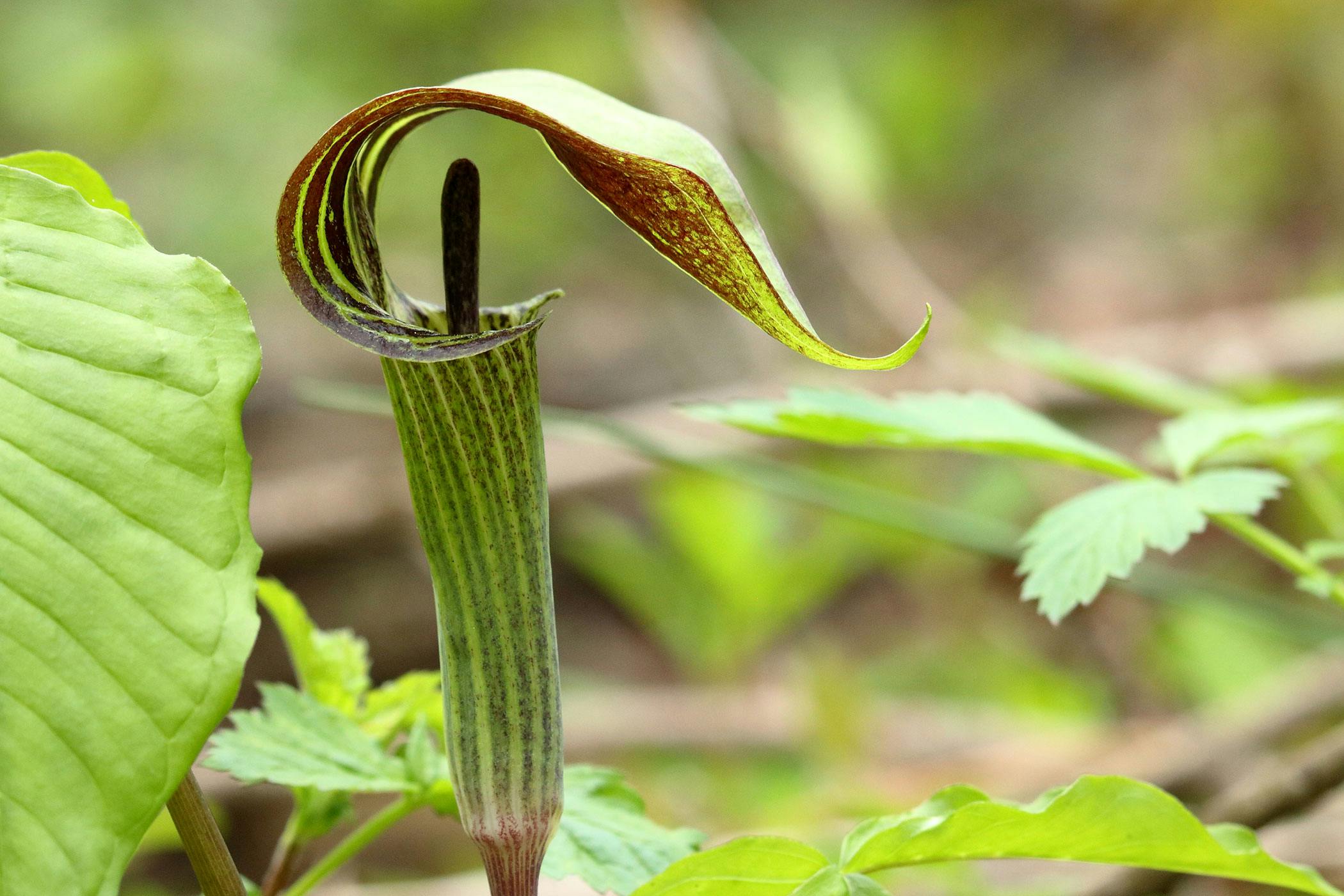Jack-in-the-pulpit Carnivorous
Are you familiar with jack-in-the-pulpit carnivorous? This fascinating plant is not only a beauty to behold but also has some unique traits that make it stand out from other plants. From its intriguing appearance to its carnivorous nature, jack-in-the-pulpit carnivorous is undoubtedly worth exploring further.
The Pain Points of Jack-in-the-Pulpit Carnivorous
Like any other plant, jack-in-the-pulpit carnivorous has its share of challenges. One of the concerns associated with this plant is its potential toxicity in pets and humans. The plant contains needle-like crystals that can cause severe irritation, swelling, and burning sensation when ingested or come into contact with the skin.
What is Jack-in-the-Pulpit Carnivorous?
Jack-in-the-pulpit carnivorous is a fascinating plant that lures insects into its flower structure with a sweet smell. Once the insect enters the plant, it is trapped and digested, providing the carnivorous plant with valuable nutrients. The plant has unique physical characteristics, including a hood-like structure called the spathe that covers and protects the spadix, a central spike where the flowers and insects are located.
Main Points of Jack-in-the-Pulpit Carnivorous
In summary, jack-in-the-pulpit carnivorous is a plant with unique physical and biological traits that enable it to capture and digest insects for nutrients. Although it has its share of challenges, including its potential toxicity, it is still a fascinating plant worth exploring.
Explaining the Targets of Jack-in-the-Pulpit Carnivorous
Jack-in-the-pulpit carnivorous targets insects, which it lures into its flower structure with a sweet smell. Once inside, the insect is trapped and digested, providing the plant with valuable nutrients. This strategy allows the plant to survive in nutrient-poor soils, where it would otherwise struggle to grow.
My personal experience with jack-in-the-pulpit carnivorous was the first time I saw it in the wild. I was immediately captivated by its unique shape and had to learn more about it. It is incredible how this plant has evolved such a clever way to survive in nutrient-poor soils while providing itself with vital nutrients.
The Toxicity of Jack-in-the-Pulpit Carnivorous
As mentioned earlier, jack-in-the-pulpit carnivorous contains needle-like crystals that can cause severe irritation, swelling, and burning sensation when ingested or come into contact with the skin. While not fatal in most cases, contact with the plant can still cause significant discomfort, making it essential to exercise caution when handling or being around the plant.
Exploring the Carnivorous Nature of Jack-in-the-Pulpit
The carnivorous nature of jack-in-the-pulpit is a result of its unique shape and structure. The plant's spathe covering the spadix creates a trap for unsuspecting insects, while the plant's odor attracts them. Once the insect enters the trap, it becomes trapped and digested, providing the plant with valuable nutrients.
How Jack-in-the-Pulpit Carnivorous Survives in Nutrient-Poor Soil
The carnivorous nature of jack-in-the-pulpit carnivorous allows it to survive in nutrient-poor soils where other plants would struggle to grow. By luring and digesting insects, the plant can access valuable nutrients, including nitrogen and phosphorus, which are vital for growth and development. This strategy enables the plant to thrive in areas where other plants would otherwise fail.
Personal Experience with Jack-in-the-Pulpit Carnivorous
I am always amazed by nature's ability to create such fascinating organisms, and jack-in-the-pulpit carnivorous is one such example. Its unique shape and carnivorous nature make it stand out from other plants, making it a great conversation starter. Whenever I point it out to friends and family, they are always amazed by its incredible design.
Question and Answer
Q: Can I grow jack-in-the-pulpit carnivorous in my garden?
A: Yes, jack-in-the-pulpit carnivorous can be grown in gardens. However, it requires specific growing conditions, including acidic soils and partial to full shade. Additionally, it is essential to observe caution when handling the plant, as it contains needle-like crystals that can cause irritation and burning sensation when in contact with the skin.
Q: Is jack-in-the-pulpit carnivorous a threatened species?
A: Jack-in-the-pulpit carnivorous is not considered a threatened species in most regions, although it is a protected species in some areas. However, habitat destruction, invasive species, and climate change are threats that could impact its population levels.
Q: How long does jack-in-the-pulpit carnivorous live?
A: The lifespan of jack-in-the-pulpit carnivorous can vary depending on growing conditions and location. In some cases, it can live up to 25 years or more.
Q: What other plants are related to jack-in-the-pulpit carnivorous?
A: Jack-in-the-pulpit carnivorous belongs to the family Araceae, which includes other plants such as philodendrons, peace lilies, and taro.
Conclusion of Jack-in-the-Pulpit Carnivorous
Jack-in-the-pulpit carnivorous is a fascinating plant with unique physical and biological traits that make it stand out from other plants. Its carnivorous nature allows it to capture and digest insects for vital nutrients, making it an excellent example of how organisms can adapt to overcome environmental challenges.
Gallery
Jack-in-the-Pulpit Poisoning In Dogs - Symptoms, Causes, Diagnosis

Photo Credit by: bing.com / pulpit jack poisoning poisonous dogs flower royalty grows shady burgundy green part
Jack-in-the-Pulpit 2 - Watching For WildflowersWatching For Wildflowers
Photo Credit by: bing.com / pulpit jack lair wing secret couple bay because found take had today they their red so
Jack-in-the-Pulpit | Pet Poison Helpline
Photo Credit by: bing.com / jack pulpit arisaema japanese eva kaufman digital which box early spring
Jack In The Pulpit | Jack In The Pulpit, Flowers, Critter

Photo Credit by: bing.com / pulpit
Peoria Journal Star
Photo Credit by: bing.com / pulpit jack flowers woodland star